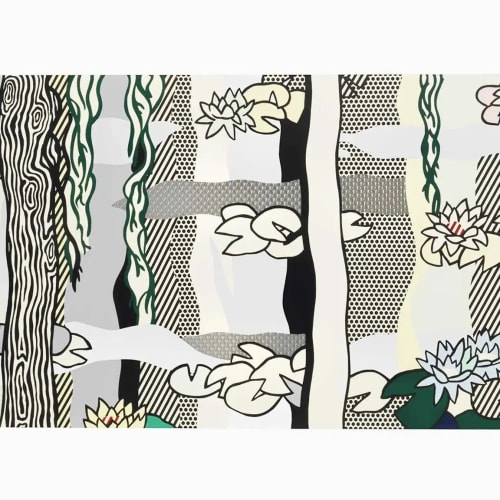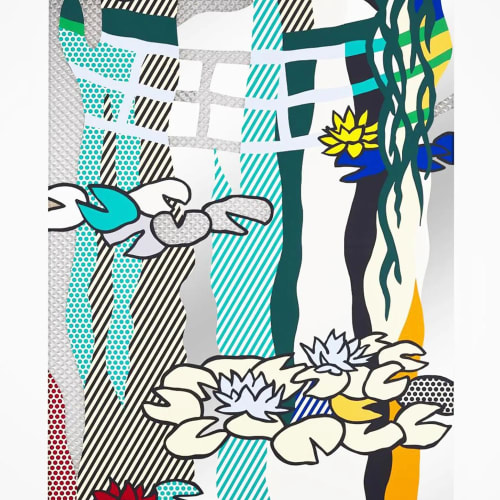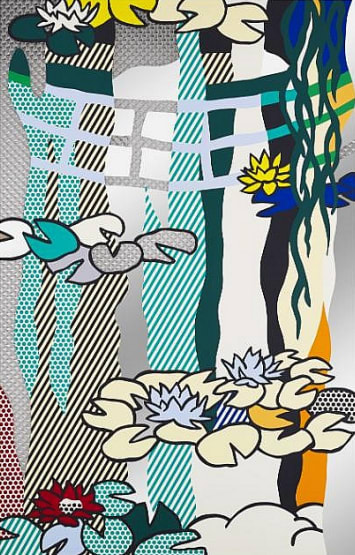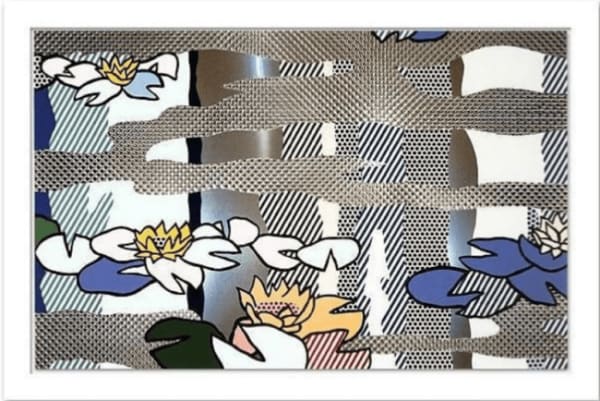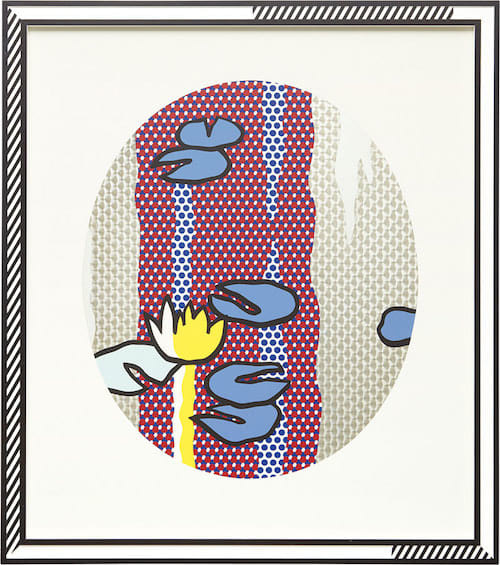Considered the culmination of Roy Lichtenstein's extensive exploration of reflections, which originated in his earliest Pop Art works, such as the 1961 painting Look Mickey, and extended to his ceramic cups and heads, culminating in the Mirror paintings, Water Lilies revisit the themes of Monet, to whom Lichtenstein had paid homage in the Cathedral and Haystack series.
Renowned for elevating popular culture images to the realm of high art, Lichtenstein subverts this process in his later career with works like Water Lilies With Cloud, appropriating the revered canon of high art to showcase his distinct visual language. Executed in 1992, this piece serves as a satirical homage to Claude Monet's revered Nympheas. Lichtenstein deconstructs Monet's style, replacing the textured brushstrokes and nuanced interplay of light and shadow with a bold simplification of form, color, and geometry. Blocks of vibrant blue hues, strong diagonals, and thick black outlines define the shadows, while Lichtenstein's iconic Ben-Day dots suggest the highlights of sunlight reflecting on water. The bold primary tones and angular forms create an almost abstract convergence of geometric shapes.
Throughout his career, Lichtenstein engaged with specific works or art-historical structures, mimicking styles such as Cubism and Surrealism. Monet, however, presented a unique challenge due to his soft colors and nuanced treatment of light. Lichtenstein, amused by the idea, stated, "When I did paintings based on Monet’s I realised everyone would think that Monet was someone I could never do because his work has no outlines and it’s so Impressionistic. It’s laden with incredible nuance and a sense of the different times of day and it’s just completely different from my art. So, I don’t know, I smiled at the idea of making a mechanical Monet". The artist acknowledged the mechanical nature of Monet's work.
Water Lilies With Japanese Bridge explores another connection between the two artists, particularly the nineteenth-century Japanese woodcut tradition of Hokusai and Hiroshige, which also influenced Monet. Lichtenstein's flat planes, occasional illusions of depth, and signature patterns in rendering landscapes reflect the aesthetic concerns of the Japanese masters. The artwork seems to reclaim the water-lily motif from Monet's fluid Impressionism, offering a changed and updated perspective, exemplifying a fascinating art-historical circularity.
